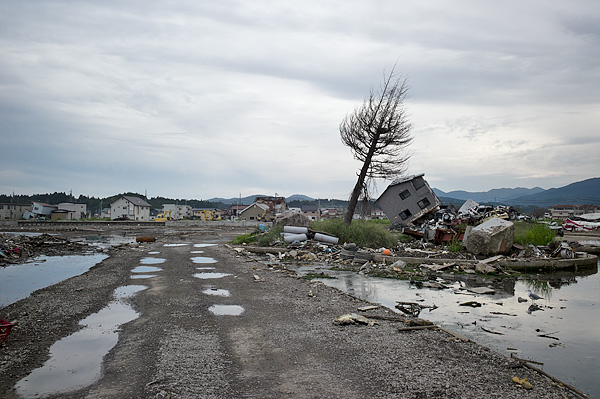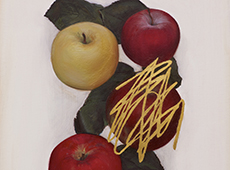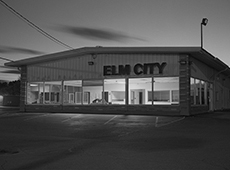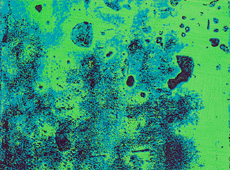The storms are getting worse–more frequent and more intense. And the science that says so blames climate change and points a finger at us. And rightly so. We know that the long term fix is the urgent fix, that we need to build smarter and in smarter places, and that we need to consume less. Until we do, what we’ve made is, like the photographer Robert Adams says, what we bought.

© Magdalena Solé. From “After the Water Receeded.”
The worst storm in a decade to hit the Bay of Bengal made landfall at the worst place it could. Better than forty million people live in the coastal state of Odisha, and better than a third of them poor and already without reliable access to clean water. The storm, its before-the-fact displacements (over 800,000 people were evacuated) and its after-the-fact mudslides and floods, instantly made life in Odisha and its neighboring state, Andhra Pradesh, worse. Between Saturday night, when the storm made landfall, and Sunday, when it moved deeper inland, 1.2 million acres of crops were lost. So were nearly a quarter-million homes, most made from mud and thatch. But it could have been worse. It could have been horrid. In 1999, when a storm of similar strength moved through Odisha, 10,000 people were killed. Credit the government and military–and the now-everywhere presence of cellphones–for helping find inland shelter for nearly one million people living along the coast. As I write this, casualties stand at 28–a number far too high, but given the unbearable losses of 1999–and the 6,000 dead or gone missing due to floods and mudslides in India’s Uttarakhand state in June–the number seems miraculous. But the story’s still unfolding, with news of flooding along the Budhabalanga River, where at least 250,000 people are marooned. And while the story unfolds in Odisha, another opens in Aurora Province in the Philippines, where the nineteenth bad storm in a year of bad storms also made landfall on Saturday.
*
The storms are getting worse–more frequent and more intense. And the science that says so blames climate change and points a finger at us. And rightly so. We know that the long term fix is the urgent fix, that we need to build smarter and in smarter places, and that we need to consume less. Until we do, what we’ve made is, like the photographer Robert Adams says, what we bought. (If you vote in the US, you can also pick up the phone to Congress and urge action on any of these pending bills, especially HR 2956.)
We know that the long term fix is the urgent fix, that we need to build smarter and in smarter places… Until we do, what we’ve made is, like the photographer Robert Adams says, what we bought.
The photograph you’re viewing is not from Odisha. It’s from the Tōhoku region of Japan, which bore the brunt of the 2011 earthquake and the tsunami that followed. It was made by photographer Magdalena Solé and comes from her project and show After the Water Receded. It’s a difficult picture because of the story it reports and because it reports it with such stark beauty. Of course, this is the power and problem of art–and of photography in particular: that it can, at once, persuade and seduce–two things that, when taken together–in any honest court–would tend to discredit the evidence. But in Solé’s picture, reportage feels in balance with transcendence. This is an artist who knows how to use color to offset the distance imposed by a wide-angle lens. Here, the grim on-the-ground facts are plain, but so is the hope triggered by the abstract beauty of pure tone.
During the next few weeks, we’ll be looking at artists who are concerned with the land–how we live on it and what we’re doing to it. We’ll begin next week with work by poet Katie Ford, who responds in poetry and prose to the fact of Katrina. Then we’ll follow with photographer Jeffrey Rich, whose ongoing Watershed project takes us deep into our complicated, and too-often harmful, relationship with water.
Follow our discussion of artists’ response to land, landscape and Climate Change here.
Learn more about artists responses to Hurricane Sandy. Visit Coming Together: Surviving Sandy here.
Subscribe to Tilted Arc
If you like this story, please consider subscribing. We are sticklers for privacy.
We will never sell or share your e-mail address.



